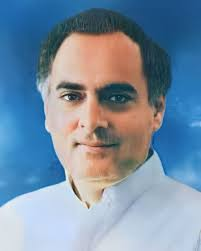Election is also the art or rather a science of possibilities.
In 1984 after Indira Gandhi's assassination, Congress won 404 seats from 496 seats it contested. The strike rate --- 81.45.
Elections in Punjab and Assam were held later only in 1985. So taking all 517 seats the Congress then contested, its tally went up to 414.
Then the strike rate was 80.07 %.
Now in circa 2024, the BJP has set a tall target for itself. The saffron party banking heavily on the 'Narendra Modi' factor is contesting 443 seats -- and if it wants to win even 350 seats -- that way 20 less than Modi's target of 370 - the strike rate should be around 79 per cent.
It's a tough job at hand.
Pure data:
2019 -- BJP contested 436 seats --- won 303 ---- strike rate: 69 per cent
2014 - BJP contested 428 eats -- won 282 ---- strike rate : 66 per cent
avge strike rate from these polls -- 67 %
Going by this 67 per cent strike rate, in 2024 - therefore out of 443 seats ==,
the BJP is set to win 299.
This would be 71 seats less than Modi's target but fairly good numbers to run the next government.
But from statistics point of view, the BJP did very bad in 2009 polls.
2009 - BJP contested 433 seats - won --116 - and therefore the Strike rate: 27 per cent.
So taking these years data - 2009, 2014 and 2019 --- the BJP may get 54 per cent strike rate and hence the tally could come down to 239 -- This is 33 less than 272 magic number.
Hence, Narendra Modi is working hard from the very beginning and he knows in order to return to power with a preferred 'higher mandate', he has to manage the Magic of Moditva of 2014 and 2019.
 |
| With Rajnath: Who made Modi - 'PM candidate' in 2013 |
Now, Hit and Pick style ::::
Total seats, BJP may win stands at : 267-290 (from a conservative standpoint)
Andhra Pradesh - BJP may get 3 following alliance with TDP
Gujarat - we gave 24, but the fact of the matter is -- it should be 26.
Madhya Pradesh - a conservative way is say they may get 25.
Rajasthan - 23 Haryana - 6 , Karnataka - 20
Kerala - zero. The reality is BJP may pick up two in Kerala.
Tamil Nadu - 1, Maharashtra - 25
Odisha _ 12-14
Uttar Pradesh likely 70
Bihar 15-17
WB 25-30
Assam -- 9
Arunachal - 2, Tripura - 2
Punjab 4 --Delhi 4-5
Telangana 8 out of 17
Manipur 1, Goa - 1, Chhattisgarh - 9
Jharkhand - 10
Jammu and Kahmir -- 2, Ladakh - 1
What factors those really favour Modi and BJP
The Modi factor
$ Sustainability of governance
$ RSS BJP orgainisational skills and cadres
# Hindutva, Ram temple and Welfare Measures and Development
# Target Viksit Bharat, Atmanrbhar Bharat
On the Other hand, Opposition -
No focused approach
Divided alliance
AAP, Congress against each other in Punjab
Trinamool and Congress against each other in West Bengal
Absence of Congress organisation structures
$$ No national level big narrative against Modi except -- general allegation of
being a Dictator and being pro--Hindutva; that is -- anti-minorities.
All regional parties including Congress face existential crisis. AAP has its problems-- also different challenges in Punjab and Delhi.
All regional parties are busy saving their own house including Congress -- that is struggling had to remain united and relevant.
In 1989, VP Singh was the face of the opposition and even National Front Chairman and TDP chief N T Rama Rao (NTR) campaigned aggressively for V P Singh.
They had a goad ... reached the goal.
In 2014, INDI alliance -- no face no goal.
Important political points and counterpoints:
** The BJP has been focusing its efficient campaign machinery, backed by vast financial resources, on winning new seats and regions including south Indian constituencies.
** BJP’s dominance in north and central India and western states of Rajasthan and Gujarat now largely assured.
** BJP all set to do very well in West Bengal and Odisha
"Many fear that the gulf between India’s north and south could worsen after 2026, when India’s electoral map is due to be redrawn according to population growth.
India’s poorer, more populous north – the stronghold of the BJP – is likely to gain parliamentary seats while southern states, which successfully brought down their populations years ago though progressive welfare and education policies, are likely to lose significant parliamentary representation." -- The Guardian, London










No comments:
Post a Comment